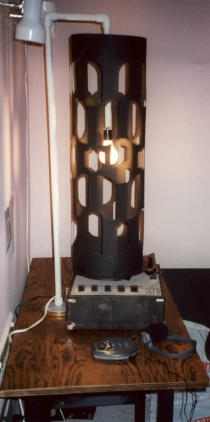Go Crystalpunks!
 Browsing through text about the Chinese game Go, I wondered whether one could step back a bit in the game's architecture and make the board not just a stage, but 'a part of' the progress of the game. Initially there could be a limited number of squares, which grow as pebbles are placed. So if you place a bead on some lone square, it might now "grow" neighbouring empty squares. I believe this would be a worthy experiment, and increase the complexity of the binary representation into trinary - just the way I like it.
Browsing through text about the Chinese game Go, I wondered whether one could step back a bit in the game's architecture and make the board not just a stage, but 'a part of' the progress of the game. Initially there could be a limited number of squares, which grow as pebbles are placed. So if you place a bead on some lone square, it might now "grow" neighbouring empty squares. I believe this would be a worthy experiment, and increase the complexity of the binary representation into trinary - just the way I like it. In other news, my friend Wilfried Hou Je Bek (Social Fiction) has released yet another crazy product of his fertile mind - Gargoyle: A Crystalpunk Automaton for the Chain-Reaction Glitterati. An excerpt from his introduction, with my favorite themes as usual:
The automaton provides a framework for creation as much as playing a goad game of chess or go is a form of art. Herman Hesse seems to have hinted at the possibility of writers refusing to write any more of them library cluttering books, and would instead create new games in which readers can contruct their own novels and music and metaphors. This automaton is the crystalpunk gesture towards this idea.


 An
An  Michael Betancourt's essay
Michael Betancourt's essay  Found while rummaging at
Found while rummaging at  McKenzie Wark is the author of
McKenzie Wark is the author of  Some new Deleuzean connections have emerged to support my ongoing study of
Some new Deleuzean connections have emerged to support my ongoing study of